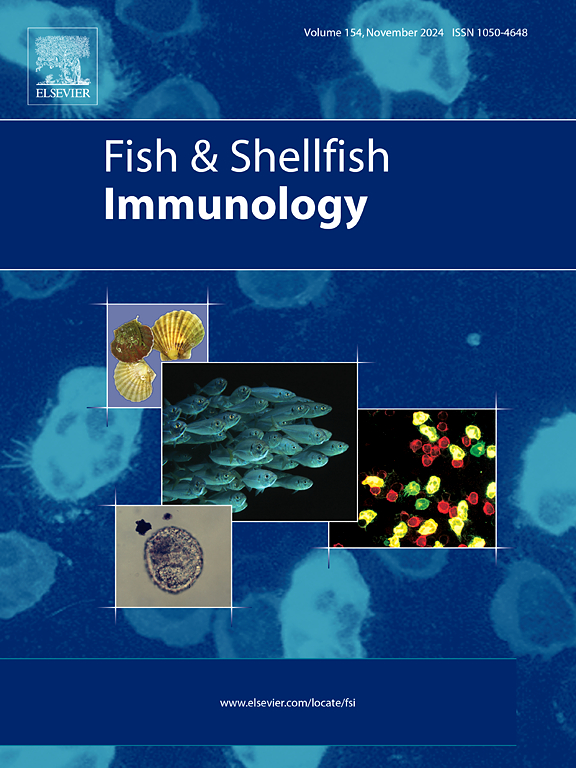SQSTM1/p62 from Litopenaeus vannamei is involved in the immune response to Vibrio infection
IF 4.1
2区 农林科学
Q1 FISHERIES
引用次数: 0
Abstract
Sequestosome 1 (SQSTM1 or p62) has multiple functional domains, and it can not only be involved in autophagy process, but also defend against oxidative stress by invoking the Keap1/Nrf2 signaling pathway. However, the role of p62 in the response of Pacific whiteleg shrimp Litopenaeus vannamei to bacterial infection is still unclear. This study successfully identified p62 from L. vannamei (Lv-p62). The length of the open reading frame (ORF) of Lv-p62 is 1908 bp, which encoded 635 amino acids, and had Phox and Bem1p domain (PB1), Zinc-binding and ubiquitin-associated (UBA) domains. The expression level of Lv-p62 in the hepatopancreas of healthy L. vannamei is the highest, and it could be significantly induced under the stimulation of Vibrio harveyi. Besides, knocking down Lv-p62 by using RNA interference technology could reduce the expression levels of Nrf2 (nuclear factor erythroid 2-related factor 2), LC3 (microtubule-associated protein 1 light chain 3) and autophagy-related gene (ATG3, ATG5 and ATG12). Compared with the stimulation with V. harveyi alone, stimulation with V. harveyi after knocking down Lv-p62 could reduce the expression of antioxidant-, autophagy- and apoptosis-related genes in L. vannamei. Moreover, knocking down Lv-p62 could reduce the apoptosis signal of hepatopancreas and the abnormal tissue structure caused by V. harveyi. These results indicated that Lv-p62 is involved in the immune response to Vibrio infection in L. vannamei, which further enriched the regulatory function of p62 and its role in the innate immunity of shrimp.
求助全文
约1分钟内获得全文
求助全文
来源期刊

Fish & shellfish immunology
农林科学-海洋与淡水生物学
CiteScore
7.50
自引率
19.10%
发文量
750
审稿时长
68 days
期刊介绍:
Fish and Shellfish Immunology rapidly publishes high-quality, peer-refereed contributions in the expanding fields of fish and shellfish immunology. It presents studies on the basic mechanisms of both the specific and non-specific defense systems, the cells, tissues, and humoral factors involved, their dependence on environmental and intrinsic factors, response to pathogens, response to vaccination, and applied studies on the development of specific vaccines for use in the aquaculture industry.
 求助内容:
求助内容: 应助结果提醒方式:
应助结果提醒方式:


